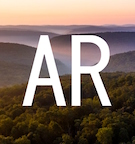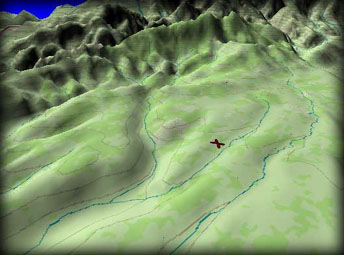
|
||||||||||||||||||
|
|
||||||||||||||||||
  








  









| ||||||||||||||||||
First 'Wireless Wilderness' Project Ends
By Thom Powell A two-year effort by BFRO to obtain photo and video images
of sasquatches has ended. We learned a lot about deploying a remote monitoring
system though we did not get the video evidence we hoped for. The only
photographic evidence we got was a few shadowy images.?
We are sharing our results and experience now so that others can
initiate future projects with greater chances of success.
A two-year effort by BFRO to obtain photo and video images
of sasquatches has ended. We learned a lot about deploying a remote monitoring
system though we did not get the video evidence we hoped for. The only
photographic evidence we got was a few shadowy images.?
We are sharing our results and experience now so that others can
initiate future projects with greater chances of success.
Our project began with a sighting report received by the Bigfoot Field Researchers Organization (BFRO) in April of 2000. Residents of a ranch in western Washington were reporting multiple bigfoot sightings on and around their isolated homestead.? Considerable effort went into confirming the report of a possible bigfoot family group frequenting the area. As it turned out, not only did the site offer strong evidence of repeated sasquatch visitations, but it also had everything else that we were looking for in a good monitoring site: cooperative and resourceful residents, proximity to extensive forests, and 110 AC power and phone lines on-site. (See the Digital IQ magazine article for more early details.)
The residents still wish to keep the location private, but we may refer to them as Allen and April, or just A&A for short.? They raise many types of livestock on their ranch, and keep many pets as well.? They often rescue and rehabilitate injured wildlife.? They are keen animal trackers and completely at ease with the bigfoot activity which was sometimes quite close to the house. They had multiple sightings and had been aware of the possible bigfoot family group for many months before they contacted the BFRO. They were not at all eager to be invaded by strangers and they were cautious about their involvement with the BFRO.? They also insisted that their names and location remain confidential. Besides concern for their own privacy and that of their neighbors, A&A had great concern for the well being of the sasquatches. Nothing that might endanger the bigfoots would be tolerated. All things considered, it was an ideal situation for installing cameras that we hoped would get photos of the local bigfoots.
Many kinds of evidence surfaced on the property, though most of it was subtle. Large footprint tracks were often found. They were seldom distinct. Rarely were these tracks distinct enough to warrant casting them with plaster. Wide game trails were observed that had no hoof prints on them. Most of the members of A&A?s family had sightings from the car or from horseback.? The daughter and the mom had the most. Visitors to the homestead sometimes had sightings on the drive in, and other nearby residents had sightings and inexplicable experiences of their own. Livestock such as rabbits and chickens often vanished, and other types of bait left out for the bigfoots routinely disappeared.?
Despite the many signs of bigfoot activity at the site, funding the project was a struggle.? Financial constraints forced us to start simple. Our initial equipment consisted of a ?Buckshot? weatherproof, motion-activated still camera. It was positioned to photograph anything that tried to enter an outdoor freezer that was being mysteriously raided. Among the items that disappeared from the outdoor freezer were a half of a pig and a lot of smelt. We were familiar with reports of freezer raids from a previous situation in southeast Oklahoma. An outdoor freezer in that state was being fleeced of deer meat in conjunction with many direct sightings. In light of this, it was reasonable to test the possibility that the bigfoots were the culprits in the case of A&A?s freezer losses.
The ?freezer cam? as we called it, was tripped a few times during that first spring and into the summer, but no animal photographs were obtained. In fact, the raids on the freezer ended once the camera was installed.? Meanwhile, a close-range sighting by both Allen and April, and many track finds, took place at a shady forest clearing elsewhere on their property.? We began leaving candy, bananas, and ears of corn at that location. The bait consistently disappeared and nothing was happening at the freezer, so we eventually moved the camera to the clearing.? The camera was tripped a few times at its new location but nothing ever appeared on the photos. Again, the bait stopped disappearing as soon as we stationed the camera at the location and the bigfoot activity there soon ceased altogether. We also discovered to our surprise that some of the game trails leading to the clearing had been barricaded with criss-crossed limbs. Later that summer, Andy noticed that the freezer had once again been opened and some of the meat we left as bait was gone.
Our camera was too crude. Sightings and other signs of bigfoot activity were continuing, so outside interest in the project increased. We were finally able to afford an equipment upgrade. We were also fortunate enough to enlist the help of Vaughn Hughes, a senior engineer at Intel Corporation. He guided us through the acquisition and deployment of CCD video technology, infrared illuminators, and a motion-activated video capture software package known as ?Eyes and Ears.? This software enables a computer to capture, store, and upload images to a secure, password-protected website that Vaughn constructed. Image data could then be downloaded and viewed remotely from any home computer.
What sounds like a simple system was anything but simple.? Beyond the equipment problems and computer glitches, environmental factors provided frequent hassles. Camera placement could not be based solely on promising locations for sasquatch activity.? Much thought had to go into locating the camera so that unwanted video captures were minimized. At times hundreds or even thousands of weekly ?hits? were logged due to wind motion of trees, celestial and lunar movements, cloud motion, and weather changes. Video captures showed that cats, dogs, and birds were less bashful about being photographed than the more esoteric local wildlife we were after. Camouflaging of the equipment proved to be exceptionally difficult. The substantial heat output from an infrared illuminator prevents it from being covered by any camouflaging material that might catch fire. Eventually, through persistence and much fine-tuning of software and hardware, we were able to get the system running just as it had been envisioned.
Much like the SETI (Search for Extra-Terrestrial Intelligence) project, it was necessary for our project participants to sift through the hundreds of images that were being captured each week.? Dedicated individuals in the U.S. and Great Britain viewed and evaluated the hits in hopes of one day discovering the face of a sasquatch staring back at us through the camera lens.
We never got the clear bigfoot images we were hoping for, but we could certainly see that the ability to download the captured images using one?s home computer was a huge improvement. I was no longer making frequent visits to the site to collect rolls of film, change batteries, then paying for film processing, only to find that wind and tree motion was repeatedly triggering the camera. Some of the more interesting images obtained are available elsewhere on the BFRO site.
As this first monitoring project concludes, I will share these seven tentative conclusions.? Like sasquatch research in general, nothing here is provable. In the absence of hard data, one can only observe subtle changes in the landscape and look for patterns in those changes, and then try to make inferences as to why this might occur based on our knowledge of animal behavior in general.?? It need not be said but the conclusions below are completely my own, and not necessarily shared by my BFRO colleagues. If any of these hunches are correct, then they should fit with observations and patterns being witnessed by other observers at other active sites.?I am sharing these tentative conclusions in the hope that we will receive feedback on them from other bigfoot researchers or rural residents who periodically witness bigfoot activity:
- Bigfoots
seem to choose certain homesteads to frequent based on things like the
available sources of food, and maybe even more subtle matters like a
?live-and-let-live? spirit of animal accommodation displayed by some rural
residents.? A&A?s place earns
high marks on both counts. They raise many types of livestock, and
they have a compassion for animals that is evident through their behavior
and the caged animals in various stages of rehabilitation on their
property.? It is easy for me to
accept that bigfoots have the capacity to identify people who display
compassion for animals because I have seen indications of this at other
rural locations where bigfoot activity was suspected. I also understand that such suggestions
are pretty far-fetched.? Gathering
hard data on extremely rare events like bigfoot sightings is virtually
impossible. Gathering data on even rarer and more obscure matters like
behavioral preferences or characteristics is beyond the current realm of science. All we can
do when it comes to answering such questions is to look for patterns and
make educated guesses based on very limited data. It?s not very scientific, but it is the
best we can do for now.
- Bigfoots
consciously and effectively avoid most human contact. In general, they
don?t want to be seen or found by people.?
The more you try and stalk them, the more they retreat and hide
until you leave. Trying to stalk bigfoots is not just futile, it may be
counterproductive. They likely observe people in the woods. If someone is
seen to be searching for footprints and casting them in plaster, they may
strive to avoid leaving any more easily identified footprints. This
suggests that if you want to see a sasquatch, try not to be too obvious
about looking for one.? Best to go
to the woods with another purpose in mind, whether it is mushroom picking,
meditating, playing music, or painting nature scenes. Then keep your eyes open and your ears
attuned. Guns and other visible weapons are anathema.
- Bigfoots
are very smart and very shy. They modify their behavior in response to our
behavior.? The more you try to trick
them, the trickier they become in avoiding your tricks and traps. So, if you are trying to get a bigfoot
on camera, make sure that your first attempt is your best attempt. Once
you flash a bulb or aim a video camera at them, you will never get another
chance with the same group of bigfoots. Whether they understand it is a
camera or not is a point of considerable debate. Regardless, they have an aversion to
things being pointed at them, particularly things that look like weapons
or big eyes.
- Remotely
monitored video systems seem promising for getting a sasquatch on film,
but they are still crude and heavily reliant on luck. Based on our experience at A&A?s,
getting lucky probably means catching a less cautious and more curious
juvenile that carelessly wanders in front of the camera. At our experiment
site we thought we were seeing evidence that the juvenile was sometimes
far away from any supervising adult.?
One possible reason for bigfoots blocking trails could be as a
reminder to juveniles not to wander too close to suspicious items like the
cameras that we had placed in their woods.
- The
only photographic evidence we are likely to get from mounted video cameras
would be fleeting images that are lacking in detail, and therefore
inconclusive. On the other hand, the only photographic evidence that could
have any real scientific merit must be close-range, extended video or film
footage. This seems unlikely to happen with stationary remote monitoring
equipment.? A more promising
approach that has not been tried to my knowledge would be to first
habituate a family group over a period of years. Only after the bigfoots are completely
comfortable with the researcher?s presence should a camera be
deployed.? Even then, it would be
necessary to avoid big lenses and obvious cameras. I would suggest wearing a hands-free,
button-sized miniature camera that is recording images on a belt-mounted
digital recorder.
- Habituating
not just one, but a group of sasquatches to human presence is a critical
step. Bigfoots are not necessarily solitary by nature. Even when it appears that there
is only one around, there may well be a family group that keeps very much
out of sight.?(which may well occur more often than is commonly believed) Gaining their trust
takes an amount of time that is measured in years, not months. Based on
sighting report patterns, children and human females, being more
inherently vulnerable, seem to be trusted by bigfoots much more readily
than human males.
- Forget
about proving they exist by shooting one with a gun. There are practical problems of caliber
and shot-placement that make the chances of success improbable in the
extreme. Beyond that, you just can?t get close enough to one to shoot
it.? Unless you have habituated it
to your presence, it will take years to overcome their distrust of humans.
If gaining their trust were actually accomplished, empathy for the
creatures on your part would be so great that betraying them with a gun
would feel like murdering a relative. If you doubt this, it is only from a
position of no particular experience. Even if someone did succeed in
killing one, it is highly doubtful that this bigfoot executioner could
avoid the swift and lethal retribution from the rest of the family group.
This is why, when people ask me what to do if they did manage to shoot a bigfoot,
my answer is, ?Reload.? If
obtaining a carcass is your goal, chances are it will be a road kill or
other accidental mortality, not a hunting mortality.
Habituating bigfoots to humans is the critical step, which has not been achieved to my knowledge.? Yet, the world is a big place and someone, somewhere is probably well on the way. Many people seem to have figured out that, while bigfoots may be dangerous, they are not hostile toward unarmed people. While undeniably rare, bigfoots are sighted in or near forested areas in virtually every state except Hawaii.
Whoever wishes to be the next Jane Goodall certainly does not need to contact the BFRO to get started.? A large forest tract in virtually any state ought to eventually yield a bigfoot sighting to a sufficiently patient person. The more remote the location, the better, only because bigfoots seem to be bolder and more conspicuous the farther they are from civilization.? Living in a remote place, as opposed to just visiting there often, is also a huge advantage. Either way, it is largely a test of personal endurance to remain in the woods so long that the local bigfoots finally become accustomed to you and then allow themselves to be seen.? Along the way, one is certain to experience varied and sometimes intense displays of intimidation.? If one can hang tough in the face of that, then trust and habituation may eventually be accomplished.
I?m hoping to someday learn of a successful effort to habituate a group of sasquatches to human presence. If anyone has already habituated sasquatches successfully, it would likely be members of Native American tribes in the U.S. or Canada. This opinion is based on several conversations I?ve had with Native Americans. They inform me that tribal elders from certain tribes, such as the tribes on the Colville Reservation in northeastern Washington, know a great deal about habituating sasquatches. They would not want to use the term ?habituating? and they may not want share their knowledge of sasquatches for two reasons.
First, science has never valued Native American lore as a reliable source of information especially when it comes to the sasquatch, and Native American elders feel pretty much the same way about science. Second, Native Americans are very aware of the bigfoots? strong desire to remain undisturbed. Native American ethics on this matter illustrate a basic paradox that is working against our ever hearing about anyone?s successful efforts to habituate sasquatches, on or off a reservation.
It seems that anyone who achieves success at habituating bigfoots also develops considerable empathy for the creatures along the way. As a result, it is very unlikely that the observer would be willing to betray the confidence of the animals by sharing with others the secret window they have gained into the hidden world of the sasquatch.
If you would like to contact the BFRO regarding this article, please use our comment form.